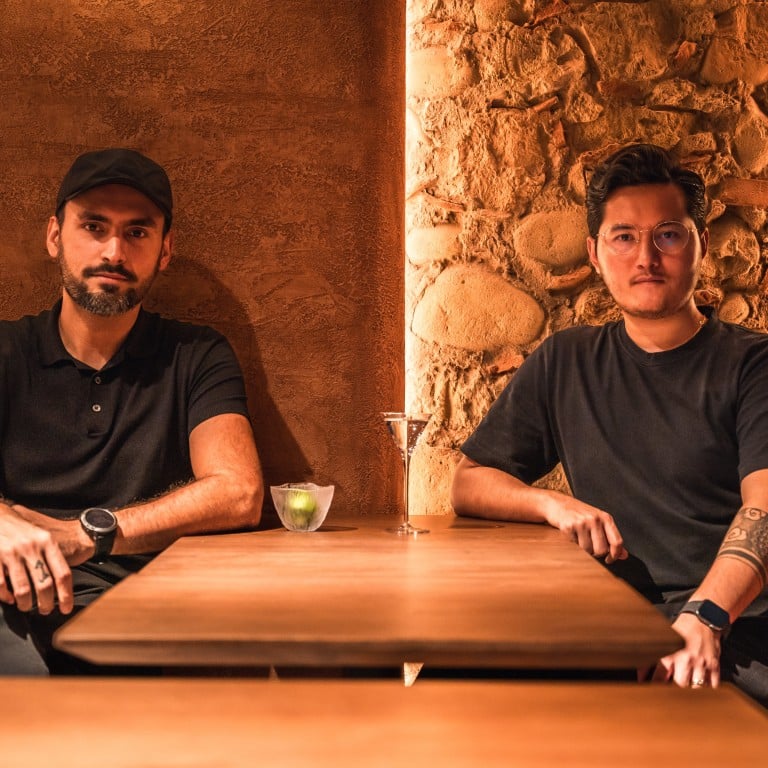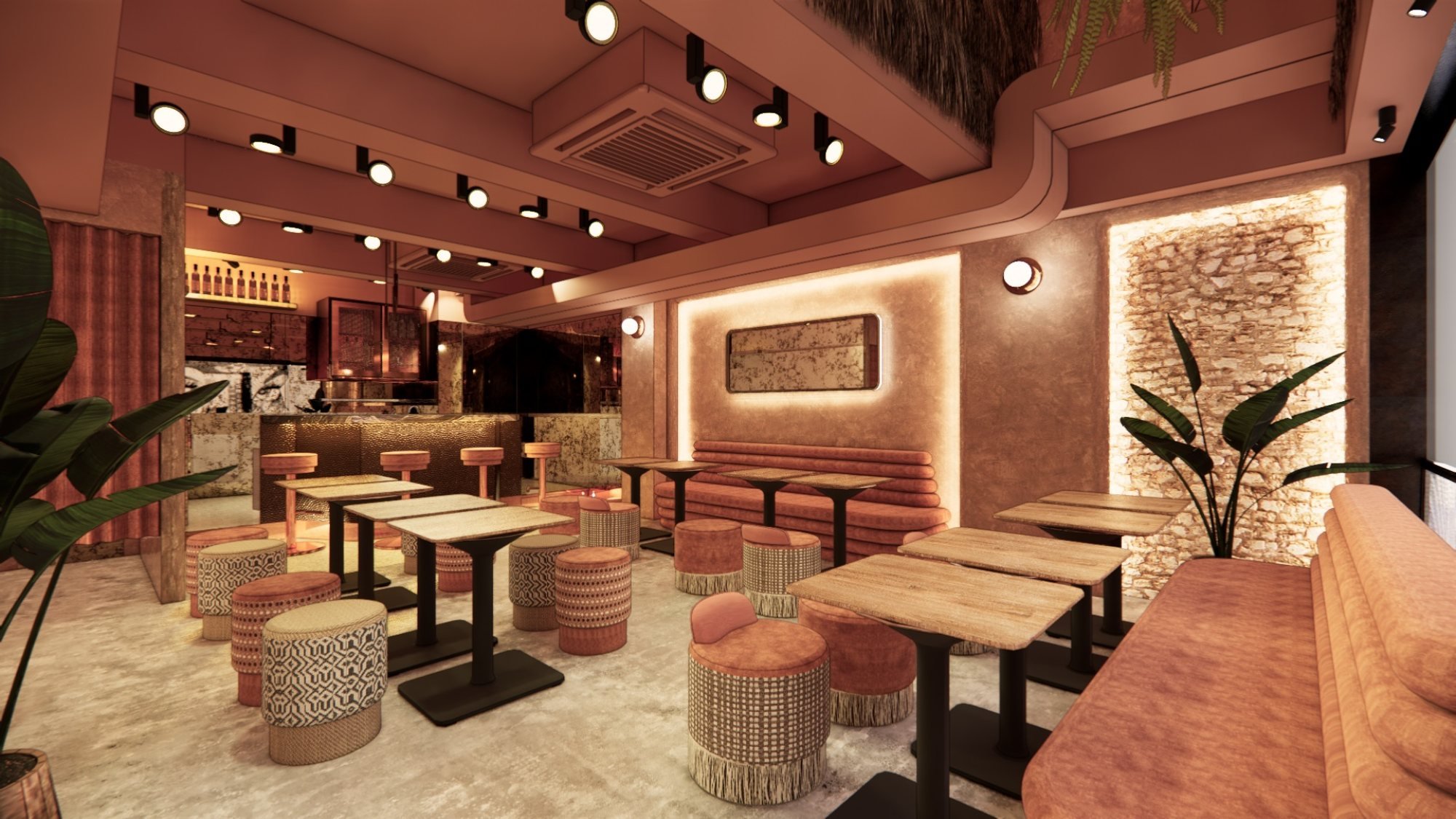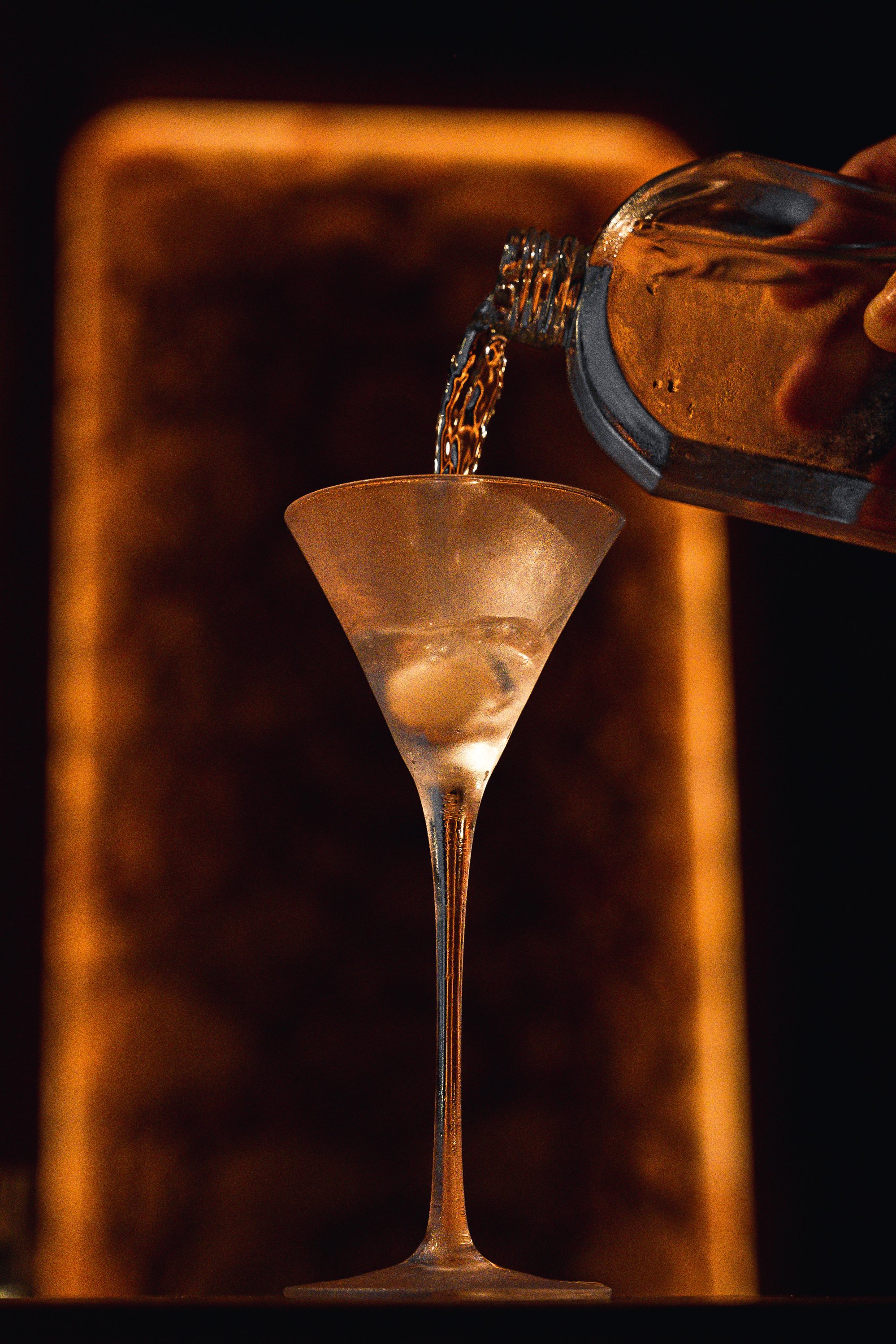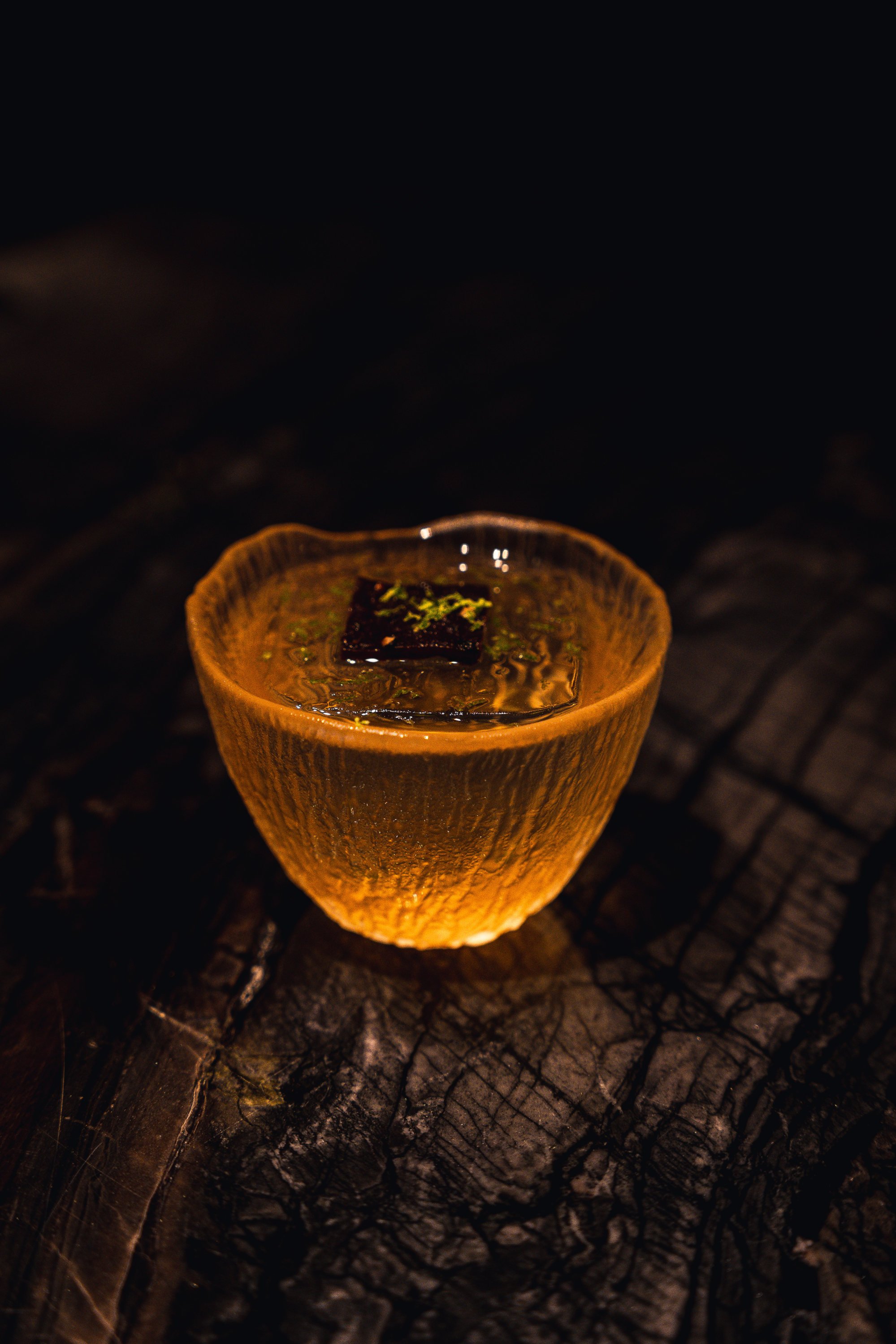
Is The Savory Project Hong Kong’s next Coa? Ajit Gurung and Jay Khan, masterminds behind the two-time No 1 cocktail bar on Asia’s 50 Best Bars, team up to cook up new ‘food-centric’ cocktails
- This is Khan’s first new concept since his agave-drenched debut on Shin Hing Street, developed in partnership with Ajit Gurung, also of Coa and previously of Stockton and Lily & Bloom
- The Thai Beef Salad uses a mix of beef, peanut, coconut, chilli, kaffir lime and rum, while other drinks include shiitake mushrooms and leeks
When Coa opened in 2017, I was tasked with writing a review for my then-employer. The bar was almost empty when I visited in the first couple of weeks after its opening, which wasn’t uncommon for new bars back then. The drinks were excellent and the staff supremely helpful, guiding me through a menu, loosely bound like a book, of mescals and tequilas that was almost encyclopedic in its detail. We sipped some spirits from a selection of tiny gourd cups.
My review contains possibly one of the most inaccurate F&B predictions in Hong Kong history. Yes, Coa is great, I said, and what a shame that it’s unlikely to remain open for more than a year since Hongkongers probably aren’t ready for this kind of intense, agave-focused concept.
It didn’t seem a wild prophecy at the time. Neo, Coa’s predecessor in the same location, had opened and shut after little more than a year. And few now remember the brief existence of Mezcalito or Los Sotano, those other agave bars that opened in Central around the same time as Coa.
The 10 best bars in Hong Kong: from Argo and The Aubrey to 001

Hindsight is a wonderful thing. After six years, numerous awards, and two years and counting at the top of Asia’s 50 Best Bars list, Coa is Hong Kong’s most celebrated bar, a place where the only reason not to visit is the concern about how long you might have to wait to get in.
The halo that now surrounds Coa means expectations are sky high for The Savory Project, co-founder Jay Khan’s first new concept since his agave-drenched debut on Shin Hing Street. His right-hand man these days, and instrumental in the founding of The Savory Project, is Ajit Gurung, another veteran of the local scene who previously worked at the likes of Stockton and Lily & Bloom.
“We want to surprise people,” says Khan of the new concept. “We want things to be completely different from what we’d done before.”
3 OTT luxury drinks to splurge on in 2023, from NFTs to million-dollar rum
When what came before was a success as monumental as Coa, is trying something new a bold endeavour to be applauded, or a recklessness to be avoided?
The new concept’s name hides no secrets. The focus is savoury drinks, centred on food-driven ingredients – think white soy sauce or corn husks.

While some might question deviating so far from the kind of cocktails that made Coa famous – those agave-focused takes on the classics, and tequila and mescal originals – the pair are firm in their belief that customers already like savoury drinks. They just don’t know it yet.
“We’re very observant when it comes to watching how people react to drinks,” confides Khan. “And we realised that if we made something savoury for a customer and they tried it without knowing, they often felt like it was unique and they actually enjoyed it.”
“People don’t realise they like savoury cocktails, or really know what they are,” adds Gurung. “We’re here to introduce them to that. Same as how people didn’t realise they like tequila or mescal until they tried it at Coa.”
6 fancy cocktails to try at Hong Kong’s bars, from DarkSide to The Aubrey
Although brief – there are just seven alcoholic cocktails to choose from – the menu is sweeping in style. There are gentler options (Shiitake Bamboo – shiitake mushroom, spicy umeshu and fortified wine), robust options (Gibson 2.0 – leek, peppers, fortified wines and gin) as well as options Gurung describes as “extremely savoury” and “extremely complex”. Non-alcoholic options are a significant part of the menu too, ensuring there is something for everyone.
Perhaps the drink that best encapsulates the concept is the Thai Beef Salad, a mix of beef, peanut, coconut, chilli, kaffir lime and rum. The list of ingredients may sound exaggerated but at one point during our interview, a member of staff questions Khan about a ziplock bag full of what looks exactly like a Thai beef salad.

“When we first made this, it was very intense in terms of the beef flavour,” says Khan. “So we had to tone it down and think how we could make it taste like beef without that flavour overpowering everything else.
“We tried many different versions and eventually we ended up with the one we like the most, which is super subtle. When you drink it, you taste the beef, but that’s it; it doesn’t steal the show. And then you taste the coconut and the peanut inside. We had to find that balance between savoury and approachability since we didn’t want to end up with a cocktail that feels like a meal.”
Cheers! 20 celebrities who own alcohol brands, from Drake to Kendall Jenner
It’s not just the style of drinks that is different at The Savory Project – the interior design is a complete volte-face from Coa. The latter is something of a bunker hidden beneath the steps of its corner of Sheung Wan, devoid of windows and possessing a concrete skin. Before it became famous and the crowds outside signalled its location, it was easy to walk past Coa and not know it existed.
In contrast, The Savory Project shouts out from its spot on Staunton Street. Its large front window advertises the fun to be had inside. At night, the light radiates like a beacon, guiding passengers off the Mid-Levels escalator to its door. While Coa is mostly brutalist, The Savory Project is an appealing mix of textures – wood, glass, marble and metal – and a subdued autumnal palette.

The location’s stand-out feature is its hexagonal bar counter, which excites both founders. Here, guests can stand right in the action, immediately next to the bartenders as they prepare drinks. The angles of the counter fold people in together, making conversation easier between friends and other guests. It’s unique – no other bar counter in Hong Kong has been designed to place customers at the centre of operations.
“We want to break that boundary between guests and the bartenders, so you can really get up close and watch the bartenders make drinks,” says Khan. “It feels more like a private dining experience or a home bartending experience. And I feel that’s what people want these days. They want to get closer to bartenders. They want to take photos with them, they want a video of their drink being made. They want to see what’s actually happening. They’re very curious these days.”
Why whisky is a better investment than wine – and how to get started
For most, following an act as acclaimed as Coa might be daunting, but Khan and Gurung are surprisingly relaxed. “We’ve been working in this industry for a long time and we’ve faced many different situations,” explains Gurung with a modest shrug. “So we’re always ready for whatever comes.”
Even the thought of having to match the success of Coa and produce a new concept that might be feted as one of Asia’s best bars doesn’t seem to faze the pair.

“We had a chat with the team about what success looks like,” continues Gurung. “If success is awards, we’ll be happy if we win any. But the primary way you know you’ve made it is when people talk good things behind your back. Like when people tell their friends, ‘I was at Savory Project. We went and the staff were nice and so friendly. The drinks were good.’ The best PR out there is word of mouth.”
Khan nods along, before adding: “If I wanted to be successful and make a lot of money, I wouldn’t have opened a tequila bar. I wouldn’t be opening a savoury concept. I’d be doing something that’s more approachable.
“We come from a very humble background. It’s not like Coa was successful from day one. The first year we opened, if you went you were likely drinking there alone. In the beginning it was pretty much empty. Business wasn’t good but gradually things got better and better.
“That’s why we always think about the customer experience. If we can provide the right experience, customers will come back, gradually then they’ll bring their friends and eventually we’ll have another success.”
Founders aside, given its radically different concept and design, the only thing Coa and The Savory Project might have in common is the likely tremendous success of the new concept. And that “prediction” is half right already …

